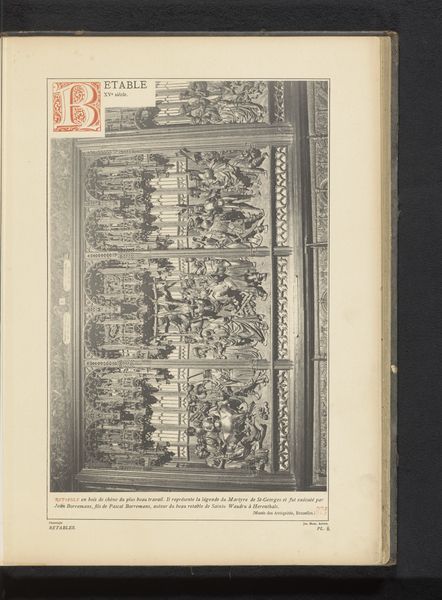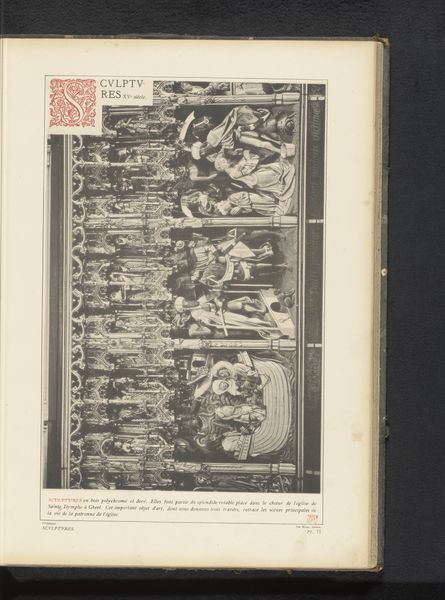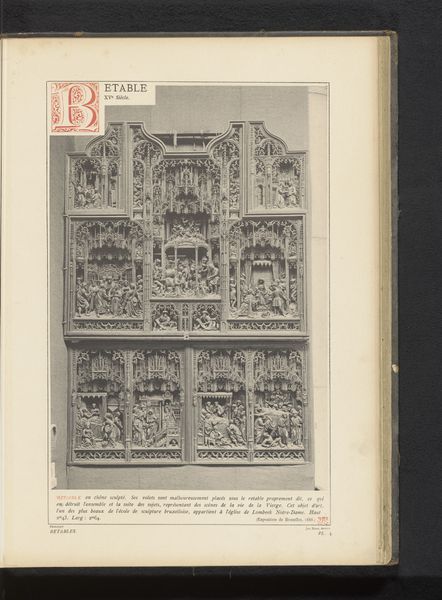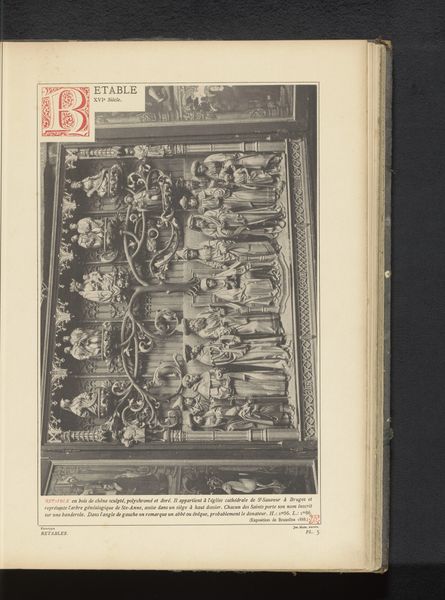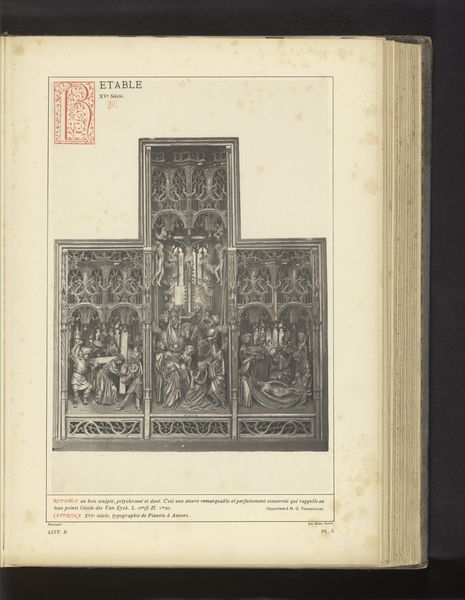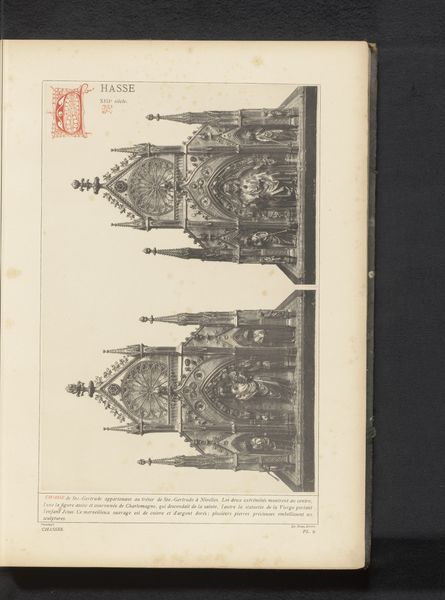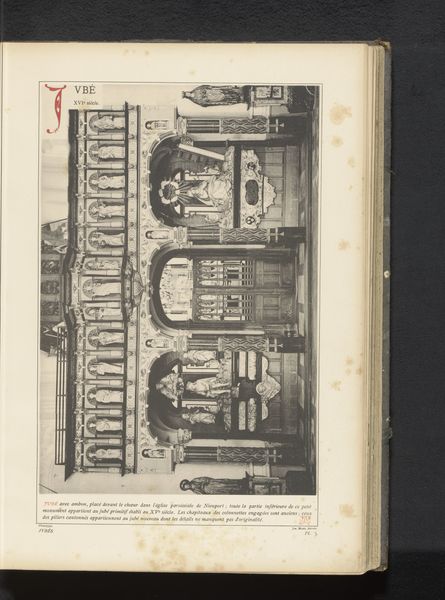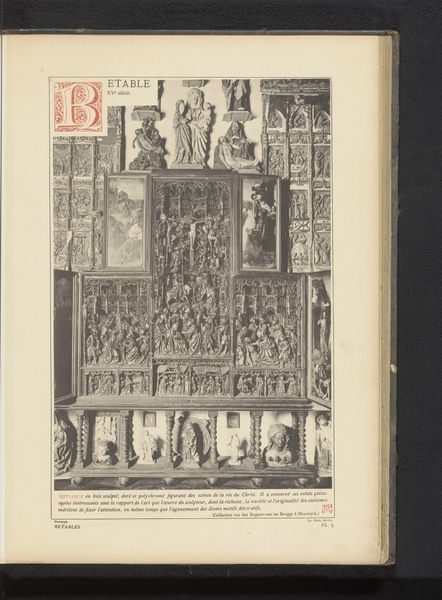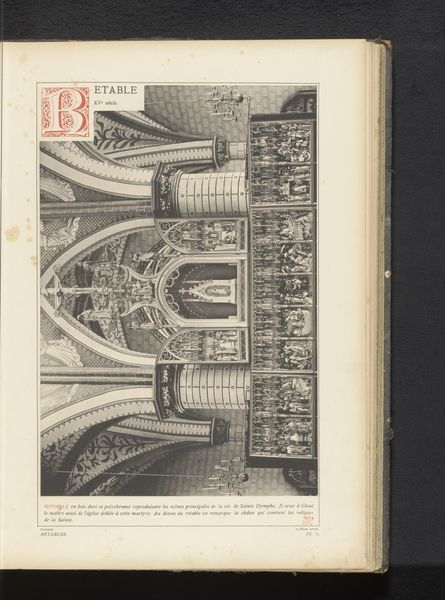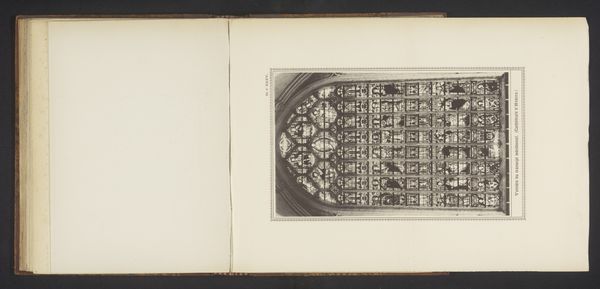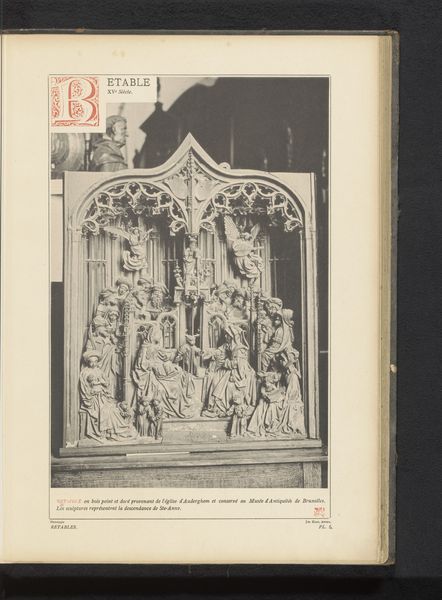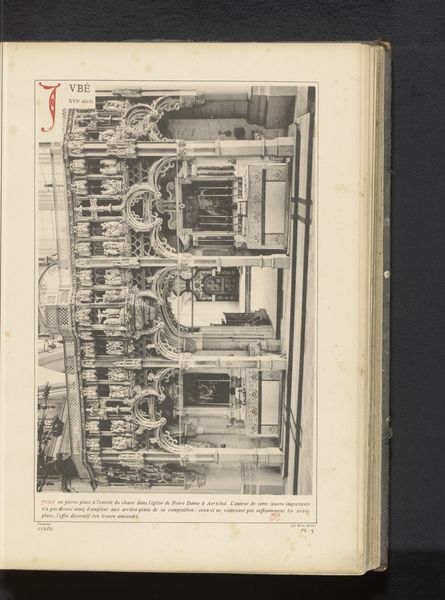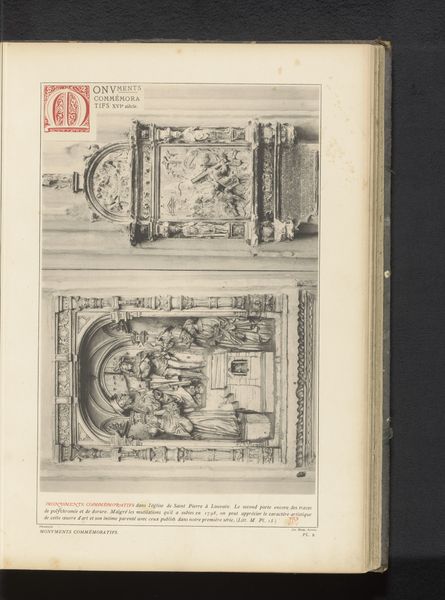
Altaarstuk van polychroom hout, afgebeeld scènes uit de Passie van Christus, in de Sint-Dimpnakerk in Geel, België before 1887
0:00
0:00
Dimensions: height 231 mm, width 341 mm
Copyright: Rijks Museum: Open Domain
This altarpiece of polychrome wood, made by an anonymous artist, depicts scenes from the Passion of Christ and is housed in the Saint Dimpna Church in Geel, Belgium. During the late medieval period in Europe, religious art was a crucial visual aid that served to educate a largely illiterate population about biblical narratives. This altarpiece, with its vivid and expressive depictions of Christ's suffering, aimed to evoke a strong emotional response, reinforcing faith through empathy and fear. Consider the historical context; the Church held immense power, influencing not just spiritual but also secular life. The detailed craftsmanship reflects both devotion and a complex social hierarchy, where art was often commissioned by the wealthy to demonstrate piety and status. This piece would have offered not just spiritual solace, but would have also reinforced existing power structures within the community. In viewing it, we confront the intersections of faith, power, and social class in late medieval society.
Comments
No comments
Be the first to comment and join the conversation on the ultimate creative platform.
